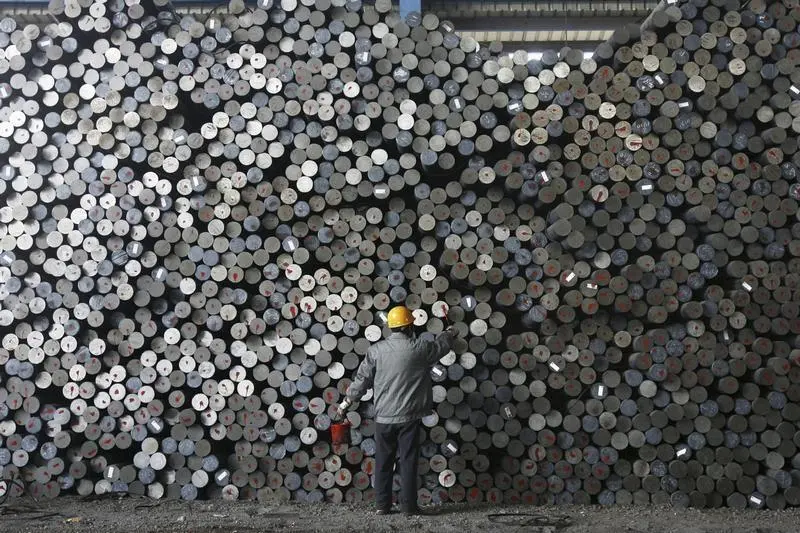PHOTO
(The opinions expressed here are those of the author, a columnist for Reuters)
LAUNCESTON, Australia - The spot price of iron ore tumbled to a four-month low as Beijing once again talked down the key steel raw material, but as usual the question is whether the intervention will lead to sustained lower prices.
The spot price for benchmark 62% iron ore for delivery to north China, as assessed by commodity price reporting agency Argus, dropped to $110.25 a tonne on April 21, the lowest since Dec. 20.
The price gave up 7.9% from the close of $119.75 a tonne on April 19, the day China's state economic planner, the National Development and Reform Commission, said it would monitor the iron ore market closely and limit what it termed irrational price increases.
China produces just over half of the world's steel and buys more than 70% of seaborne iron ore, with the main exporters being Australia, Brazil and South Africa.
It's not immediately clear why Beijing picked last week to warn the iron ore market, given that the spot price has been trending down since hitting a nine-month high of $133.40 a tonne on March 15.
In the past such interventions have tended to come during price rallies, especially if the movement has been rapid.
They have also tended to have met with limited success, especially if strong demand was the main reason behind the rally, as opposed to supply issues as happens occasionally during Australia's cyclone season and Brazil's wet period.
It's also the case the outlook for iron ore demand in China is not particularly clear cut, with some positive macro drivers but also areas of concern.
On the bullish front there is ongoing optimism over China's economic re-opening after Beijing scrapped its strict zero-COVID policy at the end of last year.
Gross domestic product rose 4.5% in the first quarter, beating market expectations for a 4.0% gain, but much of the outperformance was driven by retail spending, which isn't especially supportive of steel demand.
On the more important construction and infrastructure indicators, the performance was mixed with China's infrastructure investment rising 8.8% year-on-year in the first quarter, outpacing a 5.1 rise in overall fixed-asset investment, while property investment fell 5.8%.
INVENTORIES SLIP
Another potentially bullish indicator is China's port iron ore inventories , with data from consultancy SteelHome showing these dropped to 131.7 million tonnes in the week to April 21 from 133.3 million the prior week.
Inventories usually decline after the northern winter as steel output ramps up for the summer construction peak, but it's worth noting that inventories are now 11.9% below the 148.6 million tonnes in the same week in 2022.
This implies that steel mills may be looking to increase iron ore imports, especially if they plan to keep production at relatively high levels.
Steel output hit a nine-month high of 95.73 million tonnes in March, rising 6.9% from the same month in 2022 amid rising demand and improved profitability among mills.
First quarter production was up 6.1% on year to 261.56 million tonnes, but this may not actually be a positive if Beijing does implement a proposed 2.5% steel output cut for 2023 from 2022's 1.018 billion tonnes.
If lower production is mandated, it implies that steel mills will have to trim output over the rest of the year given the relatively strong start to 2023.
Overall, the outlook for China's iron ore and steel demand is less assured than it was at the start of the year, when optimism over the economic re-opening abounded.
For now, iron ore imports appear to be holding up, with commodity analysts Kpler estimating April arrivals at 96.27 million tonnes, which would be down from March's custom figures of 100.23 million, but relatively stable on a per day basis given April is one day shorter than March.
The opinions expressed here are those of the author, a columnist for Reuters.
(Editing by Jacqueline Wong)





















